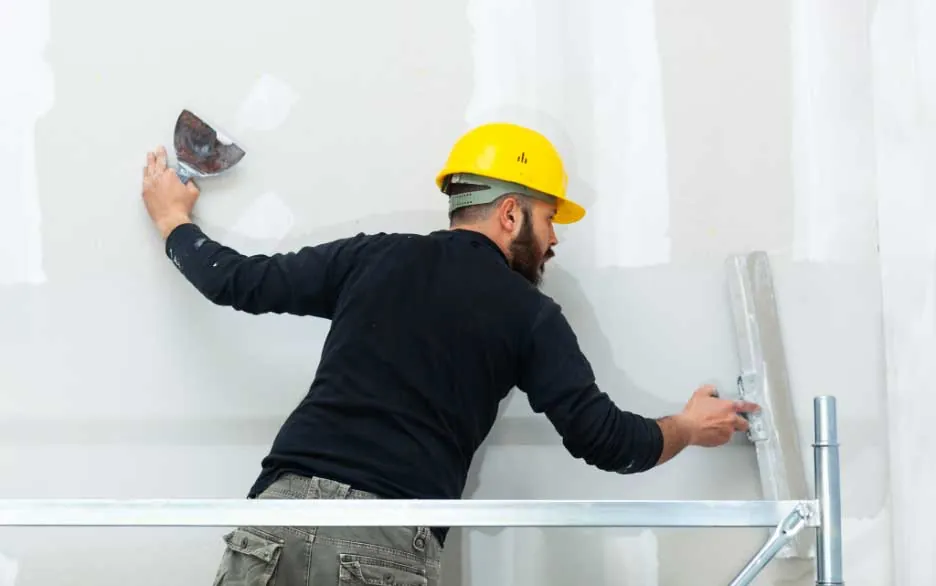Total Guide to Efficient and Dependable Drywall Installment
Drywall installment is an important component of any type of construction or improvement project, requiring a meticulous technique to ensure both effectiveness and reliability. It is necessary to explore the nuances of each action in the process, as they collectively add to the total success of the drywall setup.
Crucial Tools for Drywalling
When beginning on a drywall installment project, having the right tools is critical for achieving an expert coating. Essential tools consist of a drywall blade, tape measure, and a T-square, which are essential for exact dimensions and smooth cuts. A drywall lift is also highly helpful, specifically for ceiling installations, permitting much easier handling of hefty panels.
For fastening the drywall, a cordless drill and drywall screws are required. The drill ought to be furnished with a drywall little bit to make certain efficiency and accuracy. In addition, a vital device is the drywall saw, which facilitates cutting around electrical outlets and other challenges.

Moreover, protective equipment such as safety and security glasses and a dust mask are important to make certain individual safety and security throughout the installation process. Utilizing the right tools not just improves the high quality of the setup however likewise improves the operations, making the job much more effective total.
Preparing the Space

Next, examine the condition of the wall surfaces and ceilings. Repair any kind of existing damages, such as openings, splits, or peeling paint, to make certain a smooth and also surface for drywall application. Furthermore, check for electric outlets, pipes lines, and heating and cooling air ducts, noting their areas to stay clear of problems during installation.
It is additionally important to determine the room properly, determining the dimensions of the ceilings and wall surfaces to compute the ideal quantity of drywall required. Develop a comprehensive plan that includes the format and alignment of the drywall panels.
Installation Methods
Efficient installation methods are vital for attaining a professional surface in drywall projects. Proper measurement and cutting of drywall sheets are basic actions. Constantly measure the wall room properly, permitting for any kind of switches or electrical outlets. Use an energy blade for clean cuts, racking up the paper face and snapping the board along the racked up line.
When hanging drywall, begin from the top and work downward, making certain that the long edge of the board is vertical to the framework. Secure the sheets with screws instead of nails, which supply better holding power and reduce the risk of standing out. Area screws every 12 inches along the sides and every 16 inches in the field of the board.
For corners, use edge grains to attain sharp, clean edges. When mounting on ceilings, use a drywall lift or have a partner help in holding the sheets in area (drywall fort worth). Keep a space of about 1/4 inch above the flooring and ceiling to fit development and tightening
Completing Touches

When the tape is in location, it's time to apply the first layer of joint substance, additionally recognized as mud. Utilize a 10 to 12-inch taping knife to spread out the substance evenly over the taped joints, feathering the sides to mix with the surrounding drywall.
Allow the compound to completely dry thoroughly, commonly 24-hour. After drying out, sand the surface area gently with fine-grit sandpaper to eliminate any type of imperfections. sheetrock repair fort worth. Repeat the mudding and sanding procedure, usually a couple of layers, making sure each layer is smooth and flush with the drywall surface
Typical Mistakes to Stay Clear Of
Many Do it yourself enthusiasts run into challenges throughout drywall installation that can the original source compromise the last results. One common error is stopping working to effectively measure and cut drywall sheets.
An additional frequent mistake is incorrect attachment. Making use of too couple of screws or nails pop over to this site can lead to loose drywall, while overdriving bolts can cause the paper to tear, damaging the framework. It's important to maintain constant spacing, typically every 16 inches, and to ensure that fasteners are flush with the surface.
Moreover, not attending to dampness problems prior to installment can lead to mold development and structural damage. Always assess the environment and use moisture-resistant drywall in high-humidity areas.
Conclusion
Trustworthy and efficient drywall installment needs thorough attention to information throughout the procedure. Preventing typical errors further adds to a professional result, underscoring the importance of precision and strategy in successful drywall projects.
It is vital to check out the nuances of each action in the procedure, as they collectively contribute to the overall success of the drywall setup.When beginning on a drywall setup task, having the right tools is essential for achieving an expert coating.For attaching the drywall, a cordless drill and drywall screws are needed.Correctly preparing the area is essential for a successful drywall setup.Effective installment strategies are essential for achieving a professional surface in drywall jobs.